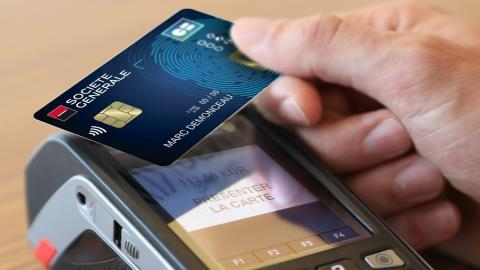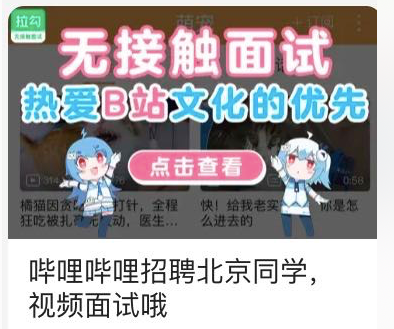The epidemic is changing the way people live.
Editor’s note: This article comes from WeChat public account “InfoQ” (ID: infoqchina) author: Chuxing Juan.
The rise of non-contact economy
A netizen on Twitter said that affected by the epidemic, his apartment has started to collect rent through secure, contactless payment methods.
On April 1, the UK will increase the transaction limit for contactless cards. On March 27, MasterCard announced that it will increase contactless payment limits in Latin America and the Caribbean. In the past few days, the UK, Ireland, Poland, Norway, Turkey, Egypt and other countries have increased the limit of contactless card payments.
McKinsey estimates that e-commerce transactions in Italy have surged 81% since the end of February. As more countries have segregated, Aaron Press, head of global data strategy research at International Data Corp., said that a significant increase in electronic payments has begun.
PayPal Holdings Inc. Chief Technology Officer Sri Shivananda said, “Our mission has never been more important than it is now.
Dayna Ford, senior research director at research firm Gartner Inc., said that despite increased retail traffic, the overall revenue of the electronic payment market this year may decline as losses from electronic payment companies that serve airlines or hotels offset the losses Growth of online retail business.

She said the crisis could accelerate the shift to online payments as more services re-evaluate their reliance on “face-to-face transactions.”
In addition to common electronic payment, Hu Tao, director of the Shenzhen Institute of Sustainable Development, has published an article that summarizes the contactless service model and products as: contactless economy.
A non-contact economy, as the name suggests, is an economy based on limited or no contact between people or people. Although it sounds new, it has actually appeared in our lives very early. Common scan ordering, e-government, instant messaging, drone delivery, and telemedicine are all non-contact economies, just before We did not propose the concept of “contactless” separately.
Hu Tao saidThe sudden outbreak quickly transformed potential contactless demand into real demand. If the SARS in 2003 caused explosive growth in China’s e-commerce, then the opportunity to prevent and control the new crown pneumonia epidemic will surely give birth to China’s “non-contact economy” and lead a new wave of global industry in the future.
Opportunities and trials
At present, companies at home and abroad are looking for cheaper, more productive and creative ways to meet the needs of the epidemic. China’s contactless services backed by 5G technology and the Internet of Things are rapidly developing.
Huanggang City, Hubei Province launched a 5G technology-based telemedicine platform that can provide remote consultation, remote imaging, ultrasound and electrocardiogram diagnosis to 14 designated hospitals fighting COVID-19. Wuhan Vulcan Mountain Hospital has built a supermarket with a self-checkout system that allows contactless payments. Face recognition thermometers have been implemented in many parts of the country to avoid excessive contact. Many companies have developed a complete contactless recruitment chain through online interviews.

On March 30, Eastern time, the United Nations headquarters in New York announced that Tencent has become its global partner, providing a comprehensive technical solution for the 75th anniversary of the United Nations, and will hold online data through Tencent conferences, corporate WeChat and Tencent simultaneous interpretation. Thousands of conference activities. The non-contact economy is not only developing rapidly in China, but it is gradually becoming a demand of all countries in the world.
But the non-contact economy is an opportunity and a test for technology companies in the epidemic.
Take the surge in online payments abroad as an example. When a customer makes a debit or credit card purchase online, the transaction data is encrypted and sent to a payment processor, which passes the information to the buyer’s bank to check if there is sufficient funds. If the bank approves the transaction, the payment processor will contact the seller’s bank to credit the seller’s bank account. The whole process is completed in two seconds. However, an unexpected surge in transaction volume may exceed system capacity.
British Telecom (BT), one of the UK’s largest telecommunications operators, said that Internet usage increased by 50% during the day. Internet speed tests using Ookla have shown that the average download speed in the locked area is slightly reduced compared to the previous level.
Video streaming such as Netflix, YouTube, and Facebook reduces picture quality to avoid broadband congestion, suggesting that the Internet is reaching a tipping point.
In the beginning, China’s technology companies also faced a surge in traffic.Bring problems. On the first day after the start of the domestic Chinese New Year, due to the surge in demand and the large amount of concurrency, the overload of traffic has collapsed. Later, apps such as Xuetong, Douban, Zhihu, iQiyi, and Xiaohongshu all became popular because they crashed.
The strong support behind the contactless economy is a series of emerging technological means such as the Internet of Things, AI, cloud services, big data, 5G and so on.
The problem of capacity expansion is the easiest problem to solve. It is more difficult to integrate these technologies into all aspects of life and bring people a more convenient experience.
Hu Tao said that the non-contact economy overlaps with future industries such as China ’s existing life and health industry, robotics industry, wearable equipment industry, and intelligent equipment industry, and is a new generation of information technology industry and high-end equipment manufacturing industry. , Green low-carbon industries, biomedical industries, digital economy industries, new materials industries and other strategic emerging industries are closely related, and they are also an organic part of cultural and creative industries, high-tech industries, modern logistics, and financial services.
Conclusion
But is a contactless economy a false proposition? Will the non-contact economy continue to develop after people live normally after the epidemic?
The driving force of this contactless economy is increased demand from vulnerable populations, labor shortages, and aging. A contactless economy is not just a change in model, it is more likely a change in people’s lifestyles and work styles. Hu Tao believes that after the epidemic, people will largely continue the consumption habits of contactless services, and the demand for contactless services will continue.
Economic Daily published a paper stating that a non-contact economy can force government and business management operations to accelerate the upgrade, while providing more development opportunities for innovative technologies. Contactless services can free more manpower from dull and repetitive positions, force the labor force to transform and upgrade, and then serve more new markets and fields.
Reference reading:
http://m.workercn.cn/lilun/2020/0324/200324160919158.shtml